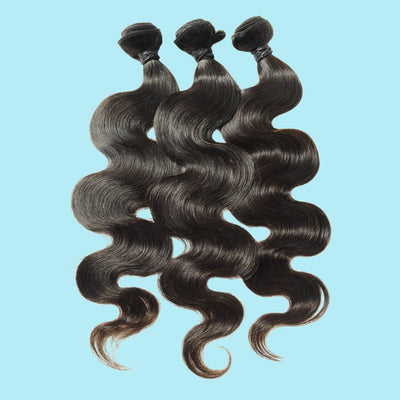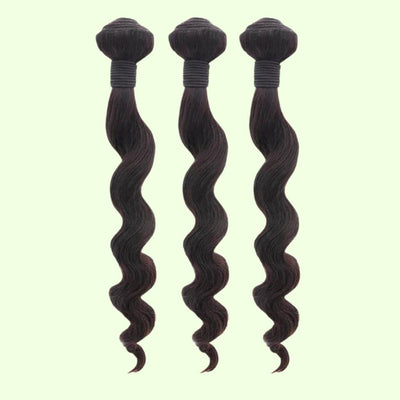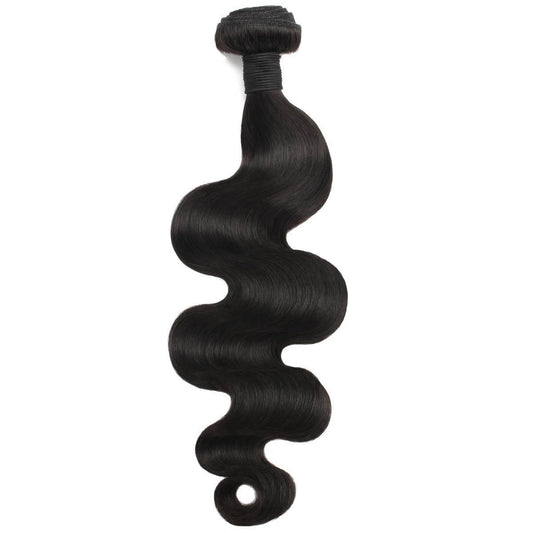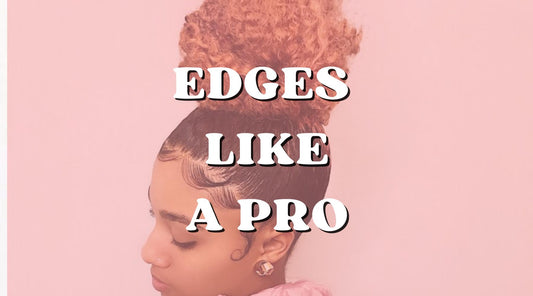1260 Memorial Drive
Atlanta, Georgia 30316
404-458-1330
True Hair Game: The Truth about Your Hair Extensions
Mikey MoranLet’s be honest most of us don’t want to know how companies get the hair we wear on our head.
If you ask people where their hair comes from, they will most likely tell you what they saw on the package or what the description said online.
Sometimes a lot of us don’t care to know where our hair comes, all we want to hear about is the quality and the price of the hair.
But what if I told you that you cannot always trust that your Brazilian hair is Brazilian hair.
In this article, I will be telling where your human hair extensions are really from and how this hair people collect the hair that might be in your bundles.

Mini Guide to Hair Extensions
Before diving into where your hair comes from here is a mini guide to hair extensions.
What Are Extensions
With a little help from my friend, the dictionary, a hair weave is a human or artificial hair utilized for the integration with one's natural hair.
Weaves can alter one's appearance for long or short periods of time by adding further hair to one's natural hair or by covering the natural hair all together with human or synthetic hairpieces.
Weaving additional human or synthetic pieces can enhance one's hair by giving it volume, length and adding color without the damage of chemicals or adopting a different hair texture than that of their own.
Extensions are simply hair pieces that can alter your hair by making it more volumized, longer or shorter, etc.
With extensions your options are endless. Black women are also not the only people wearing extensions or weave, people of all races wear weaves, human hair wigs, and clip-ins extensions every day.
Types of Extensions
When you think of extensions the first things that come to your mind are probably bundles/weave or bulk braiding hair. But there are a few other forms of extensions as well.
(Fusion/Bonded) Hair Extensions:
Individual Keratin-tipped strands are fused to your natural hair using heat. These are the most natural looking extensions because you do not have to worry about people seeing your wefts like Flat Tips and I-Tips Extensions.
Tape-in Hair Extensions:
Tape-Ins extensions are wefts of hair are attached to small sections of your natural hair using double-sided tape.
Weave/Sew-in Hair Extensions:
Machines sew hair onto wefts, and these wefts of hair are woven (with thread) onto the braids or wig caps.
These are also used to create wigs and are more commonly known as human hair bundles.
Clip-in Hair Extensions:
They attach wefts of hair to a small section and sew them onto hair clips. Similar to tape-ins but with clips instead.
Braiding hair:
Usually synthetic hair that comes in single strands not attached to a weft. This hair is best for protective styles like single braids and twist.

Things to Know Before Purchasing Extensions
The first thing you should be looking at while purchasing extensions are whether they are human hair or synthetic.
If it is synthetic pay attention to the luster and whether or not you can apply heat to the hair.
Paying attention to how shiny the hair is is key especially when it comes to synthetic hair because sometimes the shine makes the hair look super fake and weird because natural hair does not have that kind of luster.
When purchasing human hair, it is important that you pay attention to where the hair comes from and whether it remy hair or virgin hair.
Virgin hair is hair that has never undergone chemical processing whereas remy hair is hair that comes from one donor where are the cuticles are running in the same direction.
For both synthetic and human hair make sure you touch the hair before buying (this applies to people who are buying in person) this is one way you can tell the quality of the hair.
Human vs. Synthetic Hair
When comparing human and synthetic hair, all I can say is that you get what you pay for when purchasing either of the two.
Human hair extensions last much longer (Check out this article: human hair wig care) than synthetic hair extensions because human hair fibers are much stronger and durable than synthetic hair fibers.
If you are looking for something nice and cheap synthetic hair is the way to go but when looking for extensions that will last purchasing human hair is your best bet.

Synthetic and Human Hair Blends
Synthetic and Human hair blended extension is synthetic and human hair mixed on wefts. Usually, companies who make this type of hair do not state the origin of the human hair included.
These bundles usually consist of 90% synthetic hair and 10% human hair. This addition of human hair makes your synthetic hair look a little bit more natural with added durability.
Blended hair is a good buy for people who are on a budget but want something that will long laster than regular synthetic hair.
How is Synthetic Hair Made
I know when most people are asking where their hair comes from the have human hair in mind. But it doesn’t hurt to know how companies make synthetic hair since you most likely have it in your hair now or will have it in your hair in the future.
I remember when I was younger I would believe that the hair that my braiding hair was horsehair when reality it is plastic.
Synthetic hair is fine plastic fibers to look like human hair. The hair is of acrylic that uses heat and strung into hair-like strands.
Where Does Human Hair Come From
Human hair is what it sounds like exactly, hair from a human. Many people like to forget this fact because when you are thinking about it, it is kind of weird to be wearing somebody else’s hair on your head.
People collect hair through several different means. Some people donate hair for religious reasons whereas other sell their hair for a profit.
The three most popular forms of human hair sold are virgin, remy, and virgin remy hair. But there is also standard hair which people do not collect through the most sanitary ways.
Here are some key terms that come into play when discussing how you make human hair extensions:

Donors:
Who the hair is coming from
Collectors:
People who collect the hair
Workshop/factories:
At the worskshop/factories, they wash the hair and sort and sew it onto wefts.
Agents:
These are people who sell hair to big companies so that factories can make the hair into bundles, wigs, clip-ins, etc.
Chinese Hair
China is the largest hair exporter in the world. I know you probably think, 'What? That does not make sense!' because you probably thought India or like Brazil was the largest hair exporters.
I am sorry to say this, but the hair titled Brazilian or Indian It is most likely Chinese hair.
Some hair vendors will go door to door collecting ‘Fallen hair”. Fallen hair is also an example of what manufacturers called standard hair. People collect standard hair from brushes or hair that has fallen on the ground.
This hair is usually coated in silicone to keep the cuticles intact Other Chinese wholesalers collect their hair from locals who are willing to sell. Hair manufactured in China is sometimes a mix of hair from different Asian Countries.
Large factories receive the hair, and dozens of women sit to detangle wash and sometimes bleach the hair strands, just like they do in India.
Some villagers will even come into the hair factories buy a ball of hair and then resell it to a hair vendor for a higher price.
If you check the packaging on your hair and it says shipped from China but manufactures brand it as Brazilian hair, it is most likely Chinese hair.
Indian Hair
This hair is the second most sold hair on the market. Indian women, men, and children will donate their hair to temples in a sacred act called Tonsure to the god Vishnu.
This practice is an ancient Hindu tradition that has occurred for hundreds of years. They do this as a way to purify themselves and repay their debts to the gods. They give up their hair because they see hair as a symbol of pride.
Millions of men, women, and children participate in this act. Their heads are shaved or cut from their ponytail.
People in the temples then collect these strands and then auction them off to hair companies and other buyers.
This act is the primary reason why Indian is so easily attainable. But at the same time, only a quarter of the Raw Indian Temple Hair on the market comes from the temple. This information means that most of the hair is coming from women who are selling their hair for a profit.
Collectors will even stoop to low levels to get their hands on hair. Some men and women look through trash dumps searching for and collecting hair from brushes. This hair is then sold to factories in mounds and is detangled and washed by workers.

Brazilian Hair
Again I do not mean to ruin your day, but your Brazilian hair is probably not from Brazil. Because of the recent popularity of Brazilian hair, many companies will label Chinese hair as Brazilian hair because it has more monetary value than Chinese hair.
Brazilian hair is high in demand because the textures and colors mirror African-American hair. In actuality, Brazilian hair is rather scarce because they do not have mass collection sites like the temples in China or India.
The name “Brazilian Hair” can also be used as an umbrella term that includes hair from other South American countries.
Most donors come from small rural towns within Brazil and are paid for growing strong, healthy hair. Vendors will typically show up ever 6-8 months to collect the hair.
European Hair
European hair is one of the most valuable because of its unique textures and colors as well as because of how limited it is.
This does not always mean that the hair comes from a European country. The donor can simply be of European descent, and you would classify the hair as European. British women spend 65 million Euros on hair a year.
Authentic European hair usually has a hefty price tag, so if you’re paying around $60 for a bundle I am sorry to say sis, but that is not European hair.
Russian Hair
Some collectors travel to small villages and towns with the goal of persuading women to sell their locks.
Girls as young as 13 sell their hair. Like the other countries I mentioned before, Russian women also sell their hair. Their hair is typically put into a ponytail and cut at the base.
The hair is sod based on weight and length. Russian hair is also extremely valuable because it is one of the only hairs that come in natural blonde.
This way often some manufacturers will brand the hair as Russian because of the added value it gives. But if the hair claims to be from Southern Russia it is most likely just Chinese hair.

Why Do Companies Lie?
I know this question is probably on your mind right about now and there is only one simple answer which is money.
The human hair extensions industry is a multibillion-dollar business, and everybody is trying to get their share.
Because of supply and demand, companies will slap any label on the hair because they know consumers will be more willing to buy hair from certain countries.
The hair industry is not regulated which allows unethical collectors, vendors, distributors to market the hair as something it is not.
Ways To Tell Hair is Ethically Sourced
Here are a couple of quick ways you can tell if the hair you paid for is what you intended to purchase:
#1 The Shipping Label
Somewhere in the package, your hair should state what country shipped your hair. Like I said if the label says "Made in/Shipped From China" it is probably Chinese hair
#2 The Smell
If it smells chemical that most likely means chemicals were added to the hair to seal the cuticles
#3 The Hair
Sometimes companies try and market hair as 100% human when in fact it’s synthetic, and you will quickly be able to differentiate the quality by touching the hair.
Know Where Your Hair is Coming From
Scammers are everywhere, and people are always trying to make a quick buck. So, it is extremely important to purchase your hair from a trustworthy hair company or to look at reviews before buying your extensions.
Stay woke! Did any of this information surprise you? Have you ever been tricked by a hair company? Let us know by leaving a comment below!


























2 comments
It’s crazy to think about where our hair extensions actually come from. I always assumed Brazilian hair was from Brazil! Thanks for the info, Mikey Moran
Wow, this post really opened my eyes! I had no idea about the complexities behind where hair extensions actually come from. Any tips for distinguishing between genuine and misrepresented products?